If you're working from home and experiencing back pains, chances are, you aren't practicing proper and healthy posture. You need to take action if you’re already feeling the physical strain and prevent it from becoming a debilitating musculoskeletal injury.
Aside from investing in an ergonomically-designed chair, I recommend practicing yoga. Yoga is great for working on flexibility and core stability as well as correcting posture and breathing, which are all necessary for a healthy back.
Below is a simple yoga routine to help relieve your back pain and give your mind and body some rest. It is safe to do regularly if your back pain is more of a general achiness or discomfort. However, if you have a history of back or neck injuries, problems with your discs, or experience pain that lasts more than 72 hours without improving, it is best you see a doctor or a physical therapist first before performing any of the postures.
CAT & COW FLOW (repeat for 5-8 rounds)

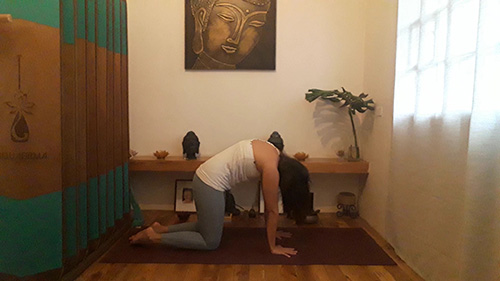
This flow increases circulation and releases any accumulated tension in the muscles of the upper back, shoulders, and spinal extensors. It also strengthens muscles of the arms, shoulders, chest, and core.
Start with the Tabletop Position by standing on all fours. Align knees hip-width apart and stack them directly under the hip joints. Align wrists shoulder-width apart and stacked parallel under the shoulders, or slightly forward. Ground your weight evenly through both knees and both palms.
Cow: Inhale, press hands down. Gently stretch the chest and sternum forward, with the top of the shoulder blades moving toward each other, making a forward arch in the upper back.
Cat: Exhale and gently round the spine with the tailbone curled towards the floor. Flatten the tops of your feet against the floor. Pressing down through the hands and feet, tip the pelvis back and draw the tailbone towards the floor. Draw the navel toward the spine and lift the back toward the ceiling.
ANAHATASANA (hold for 2-3 minutes)
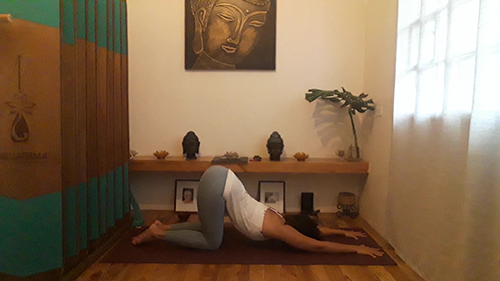
This pose focuses on stretching the upper and middle back, opens the shoulders, and softens the heart.
Start with the Tabletop Position and stretch your hands forward, allowing your chest to drop towards the floor. Keep your hips right above your knees and point the sit bones back, trying not to compress the lower back. Keep your hands shoulder-width apart if possible and avoid a “hanging” sensation in the shoulders.
THREAD THE NEEDLE (hold each side for 2-3 minutes)
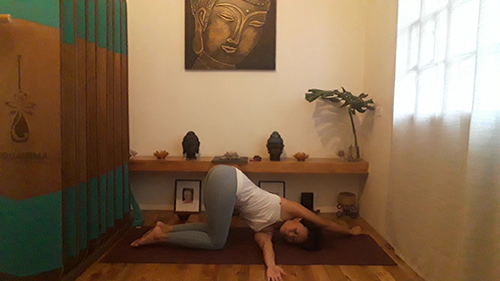
This pose stretches and opens the shoulders, chest, arms, upper back, and neck. It releases the tension that is commonly held in the upper back and between the shoulder blades. This pose also provides a mild twist to the spine, which further reduces tension.
Begin in the Tabletop Position. Exhale and slide your right arm underneath your left arm with your palm facing up. Let your right shoulder come all the way down to the mat. Rest your right ear and cheek on the mat, then gaze toward your left. Reach your left arm overhead. Repeat the pose on the opposite side for the same length of time. You can also practice this pose with your hips on your heels which also stretches the hips, thighs, and lower back.
SPHINX (hold for 2-3 minutes)
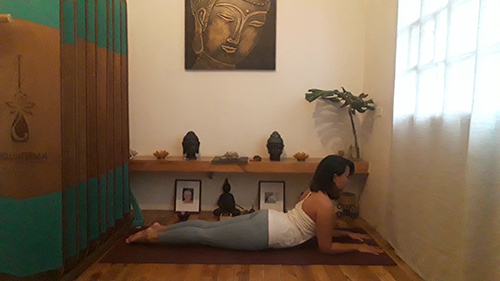
This pose stimulates the sacral-lumbar arch which tones the spine and stretches the stomach. People with bulging or herniated disks may find this very therapeutic.
Lie down on your belly. Come up on your elbows and move the elbows just in front of your shoulders, propping yourself up. Relax your buttocks and legs. Notice how this feels in your lower back. If the sensations are too strong, move your elbows further ahead, lower your chest closer to the floor, and bring your feet wider apart.
DANGLING (hold for 1-2 minutes)
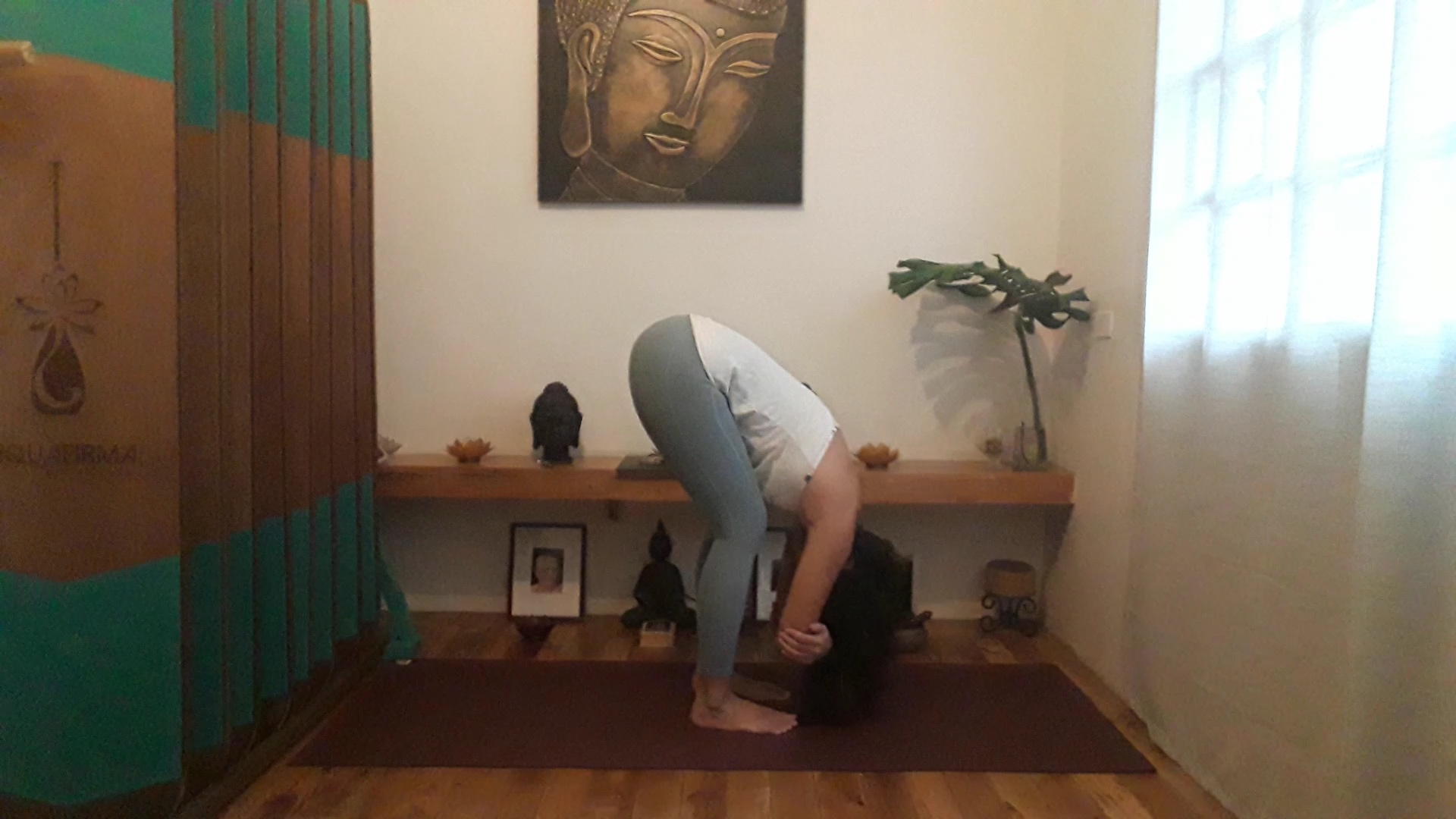
This is a gentle stretch that decompresses and rejuvenates the spine and neck. It also stretches the hamstrings and leg muscles.
Let your head dangle while you catch your elbows with your hands. Bend your knees more to strengthen the legs and release the back. You can also rest your elbows against a table, a chair, or on the thighs if your back feels strained. Hold for 30 seconds to 1 minute. Then turn and reach over to your right side with your left elbow to lengthen the left side of your back. Hold for 15-30 seconds. Repeat on the other side.
RECLINED PIGEON (hold each side for 2-3 minutes)
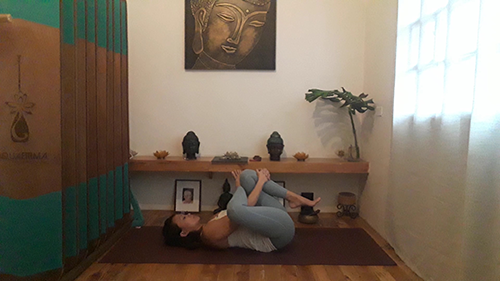
This pose releases the tension in the muscles of the lower back, hips, and hamstrings. It also opens your hips and reduces the symptoms of sciatica.
Lie on your back with your knees bent and feet on the floor. Inhale and cross your left ankle over your right thigh. Thread your left arm through your legs and interlace your hands behind your right thigh. Exhale and draw your thigh towards you, then flex your feet. Repeat on the other side.
RECLINED SPINAL TWIST (hold each side for 2-3 minutes)
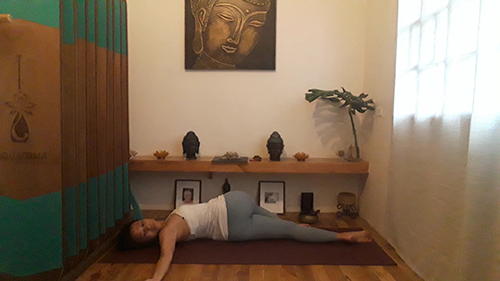
This pose relaxes tension in the deeper muscles of the back. It is an excellent pose to end your practice with since it helps relieve any kinks or strains that sometimes occur from your yoga practice.
Lie on your back. Hug your right knee up towards the chest with your left hand and reach your right arm out to the side. Bring your right knee over to the left side then look to your right hand. See if you can bring the right knee and shoulder closer to the floor to make the twist more complete. Experiment with varying twists by drawing your knees higher.
LEGS UP THE WALL (hold for 3-5 minutes)
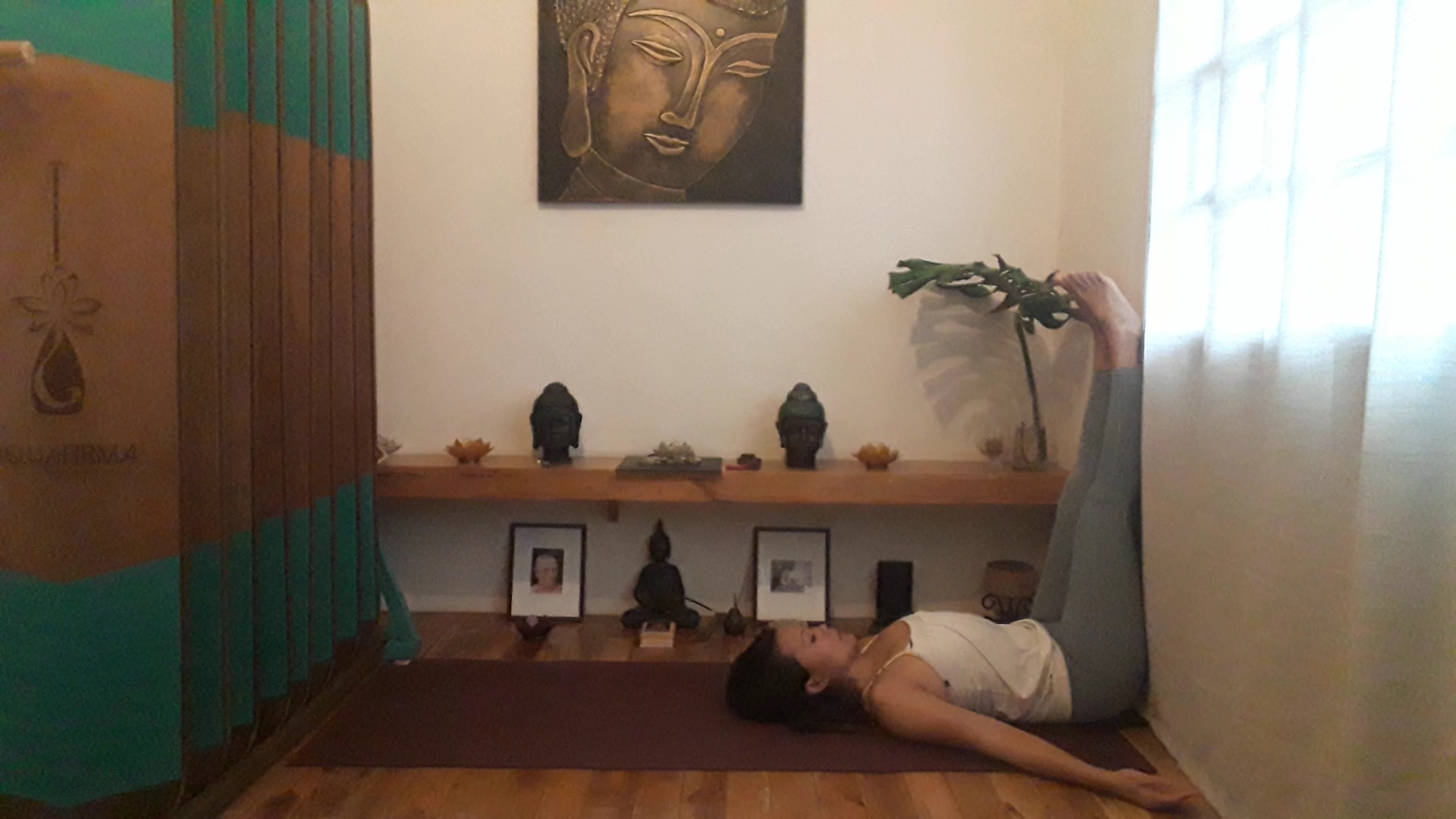
This pose affects the relaxation response, reduces fluid pressure in the lower body, releases tension in the hamstrings and lower back, encourages complete breathing, rebalances and redistributes lymph and hormonal flows, reduces overall blood pressure, and slightly increases blood flow to the head.
Sit with one hip against the wall, facing sideways, with knees bent and feet on the floor. Swing both legs up the wall, pivoting the torso down onto the floor, and creating a 90-degree angle with the body where the wall meets the floor. Release the arms onto the floor, nestling the shoulder blades down into the floor and spread wide across the back.
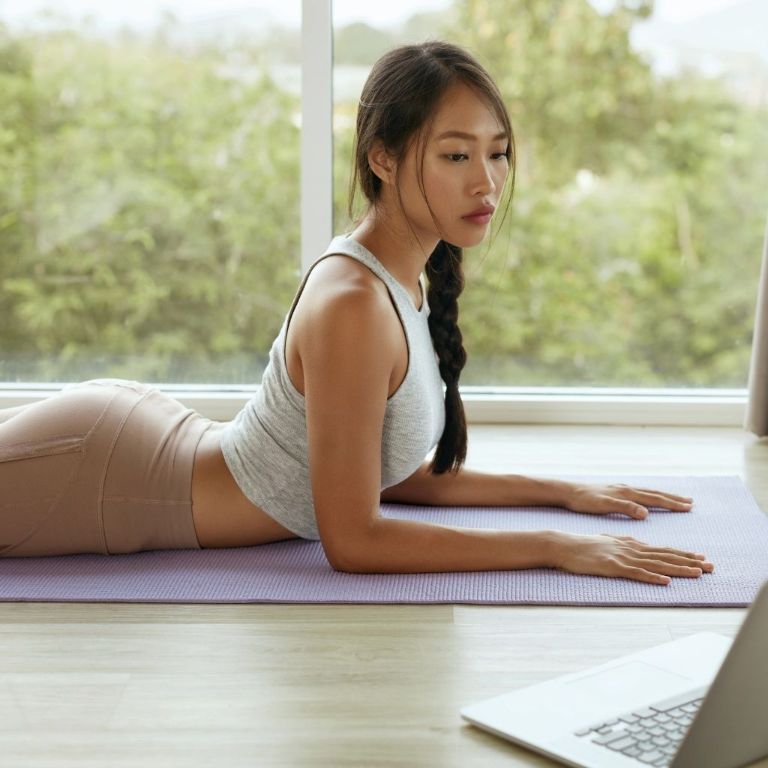


.png)





.png)

